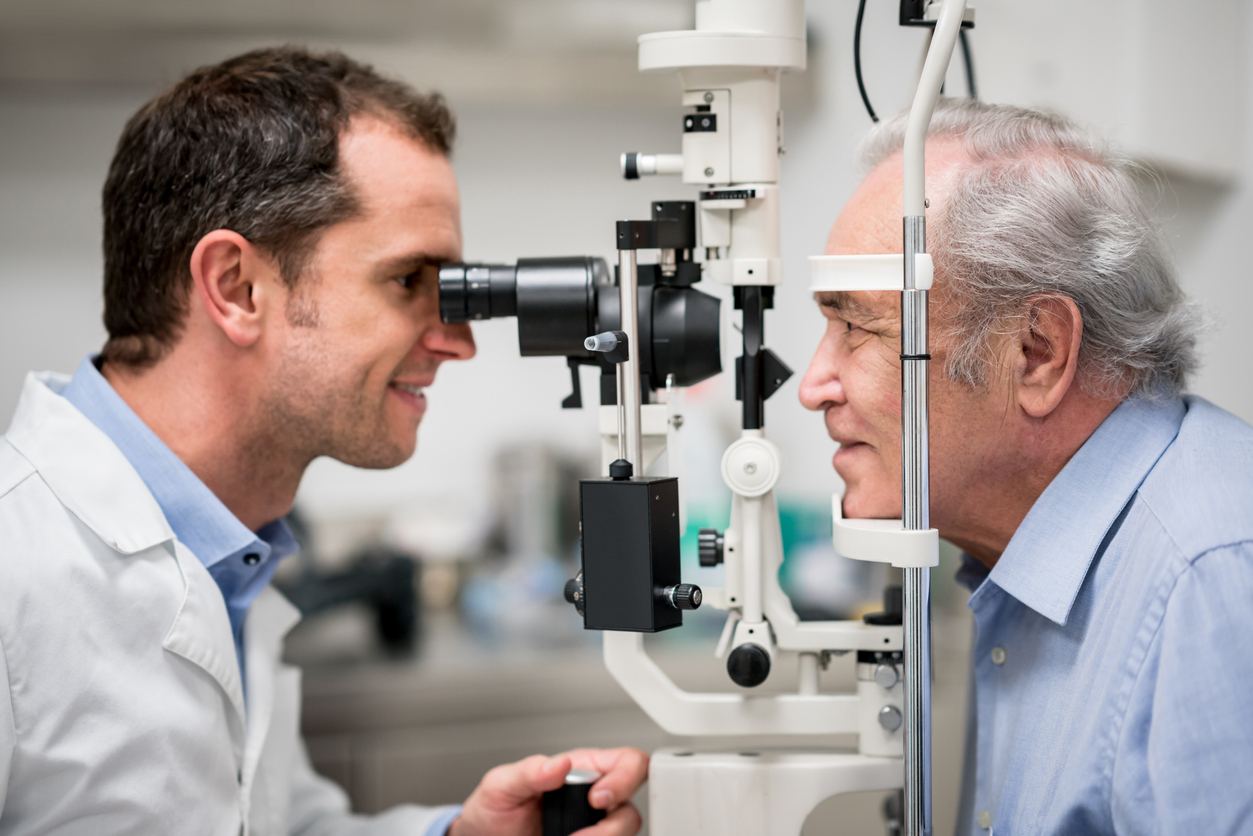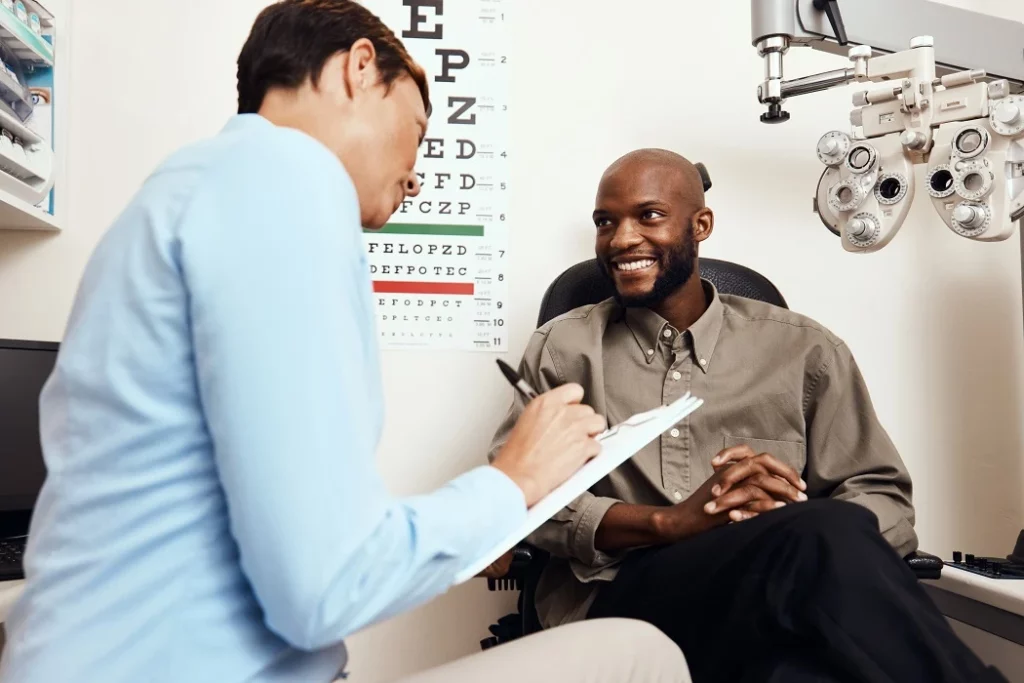The Comprehensive Eye Exam: What to Expect Throughout Your Visit to the Eye Doctor
A visit to the eye physician for a comprehensive eye exam is more than a routine exam; it is an important action in securing your aesthetic wellness. From the first conversation of your clinical history to the precision of the visual acuity examination, each component of the examination serves a particular function. However exactly what occurs during the eye health assessment, and just how does it affect the prescription procedure? Understanding these elements is essential for those that desire to preserve optimal eyesight. As we discover each part, the relevance of follow-up suggestions will certainly likewise come to be clear.
First Appointment
The preliminary consultation throughout an eye exam offers as an important foundation for comprehending a patient's aesthetic health requirements. This phase sets the tone for the whole evaluation procedure, allowing the optometrist to collect vital information regarding the patient's medical background, lifestyle, and certain vision concerns. By thoroughly reviewing any type of pre-existing problems, drugs, or previous surgical treatments, the eye treatment professional can tailor the assessment to resolve individual demands properly.

Additionally, the initial consultation is an opportunity for patients to articulate any kind of inquiries or problems, promoting a collaborative partnership with their doctor. This communication not only guarantees that the patient really feels educated and comfortable but additionally encourages them to take part actively in their eye wellness monitoring. Collectively, these discussions make it possible for the optometrist to devise a personalized exam strategy, guaranteeing ideal care and exact diagnosis.
Aesthetic Skill Test
Beginning the core components of an eye evaluation, the visual acuity examination is created to evaluate the intensity and clearness of a person's vision. This essential assessment aids identify just how well a person can determine letters or icons at a standard distance, normally using a Snellen chart (Eye Doctor Optometrist). The chart makes up rows of letters that lower in size inside out, with the patient positioned at a popular range of 20 feet
Throughout the test, the client is asked to cover one eye and review aloud the smallest line of letters they can see plainly. This procedure is duplicated for the other eye. The results are tape-recorded as a portion, with 20/20 vision showing normal visual acuity-- where the client can see at 20 feet what an individual with typical vision can see at that range.
The aesthetic skill examination additionally identifies prospective refractive errors such as nearsightedness, astigmatism, or hyperopia, which may require rehabilitative lenses. By developing a standard of visual performance, the examination is a vital diagnostic device that helps the eye care expert in establishing a proper therapy plan tailored to the client's distinct visual demands.
Eye Wellness Analysis
Adhering to the aesthetic acuity test, an extensive eye health assessment is conducted to make certain the additional hints total wellness of the eyes. This vital section of the eye exam involves a comprehensive assessment of both the external and inner structures of the eye. The eye doctor or optometrist begins by checking out the eyelids, cornea, conjunctiva, and sclera for any type of indicators of infection, inflammation, or problems. Making use of specialized devices like a slit lamp, the expert gets an amplified sight of the eye's composition, allowing detailed assessment.
Through the use of ophthalmoscopy or fundus digital photography, the retina, optic nerve, and blood vessels are meticulously assessed. In several cases, student expansion is done to enhance visibility of the interior eye structures, although this might result in short-lived light sensitivity for the client.
Furthermore, intraocular stress navigate to this site is gauged to evaluate for glaucoma threat. This is generally done utilizing tonometry, which can find raised stress degrees that could recommend potential damages to the optic nerve. Jointly, these assessments form an extensive analysis to maintain ocular health.
Refraction and Prescription
Exactly how does one make sure ideal vision? A crucial step exists in the process of refraction and obtaining an accurate prescription. Refraction is a sophisticated procedure carried out by eye care professionals to figure out the precise lens power needed to correct refractive errors such as myopia, hyperopia, presbyopia, and astigmatism. The goal of this procedure is to assess just how light bends as it passes via the eye, permitting the professional to figure out whether restorative lenses are required for improved aesthetic skill.
Throughout the refraction process, the patient is asked to check out a phoropter, a gadget that includes numerous lenses. The professional will systematically change these lenses and ask the individual to compare quality between alternatives up until the very best feasible vision is accomplished. This treatment is essential in crafting an exact prescription that specifies the appropriate lens power for glasses or contact lenses.
The prescription stemmed from this procedure not only maximizes vision however additionally acts as a structure for choosing ideal corrective glasses. It is vital to make certain that prescriptions are consistently updated, as adjustments in vision can occur gradually, stressing the significance of regular eye exams. This meticulous interest to information aids maintain clear, comfortable vision in everyday life.
Follow-Up Referrals

Throughout a follow-up browse through, the eye medical professional will certainly carry out a collection of tests to evaluate visual skill and check for any type of modifications in vision that may necessitate an upgrade to the prescription. In addition, the follow-up gives a possibility to go over any kind of discomfort or issues experienced with current glasses. Adjustments can be made to guarantee comfort and efficacy, whether via lens alteration or structure changes.
For clients with continuous conditions such as glaucoma, diabetes-related eye issues, or macular deterioration, more constant follow-ups may be necessary. These visits are crucial for taking care of and potentially slowing the development of eye illness. Abiding by these suggestions can significantly add to preserving visual health and protecting against lasting complications.
Verdict
The comprehensive eye exam is a crucial process for keeping aesthetic health, incorporating a comprehensive analysis of clinical history and vision worries. Secret parts consist of the visual acuity test, which evaluates eyesight clarity, and the eye wellness analysis, which analyzes helpful resources the overall problem of the eyes.
A check out to the eye medical professional for a thorough eye exam is more than a regular examination; it is a vital action in protecting your visual health and wellness.Kicking off the core components of an eye evaluation, the visual acuity test is developed to examine the intensity and quality of a patient's vision.Following the visual skill test, an extensive eye health assessment is performed to ensure the total well-being of the eyes. These check outs allow the eye treatment professional to keep an eye on modifications in vision, update prescriptions, and evaluate the general health and wellness of the eyes. Secret elements include the aesthetic acuity examination, which reviews vision clarity, and the eye wellness evaluation, which analyzes the total problem of the eyes.